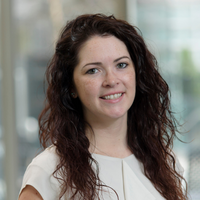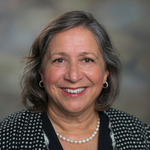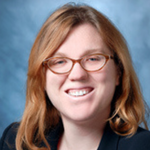In part two of this two-part series on the changes introduced with the new Standards, review more case scenarios and consider your next steps as you navigate and identify new processes. Missed part one? Read it here.
Case 4: Course Director Is a Board Member, and Company Is in the Process of Making Product for Patients
What would you do?
Dr. Startup is an upcoming course director for your live course. They disclosed they were on the board of directors of a company that is in the process of making a product that will be used on patients. The company can be defined as a biomedical startup, but because the company had not begun a governmental regulatory approval process, it was deemed the company did not meet the criteria for ineligibility. Dr. Startup was coached on the criteria and agreed to update the institution and CME department if steps were taken for FDA approval. The information provided by Dr. Startup and the compliance department was presented to the course’s unbiased peer reviewer, who also provided their input. The final decision was that the company was not yet an ineligible company and the relationship was not disclosed to the audience.
What do accredited providers need to know?
Ask more questions, and find out what the current FDA status is. Share your knowledge with the planners, and continue to educate all those who influence content.
Case 5: Speaker Discloses Stock Options
What would you do?
Dr. Stock-options, an upcoming speaker for your live course, disclosed they have a stock-options relationship. You research the company and note that it is a public company. The day before the course, you double check all your notes and realize you didn’t include the link of the company. As you search again you find you have made a horrible mistake — in your original search, you noted the wrong company and the relationship is, in fact, with a private company. After a small panic, you do a deeper Google search and you email Dr. Stock-options to clarify their relationship and nature of the company. They respond they are an advisor with stock options and the company is a biomedical startup that has not submitted an Investigational New Drug application with the FDA or any other governmental regulatory approval process. You are relieved that this is a mitigatable relationship and not one of ownership. You document all correspondence but, unfortunately, you were unable to make the change to what was disclosed to learners. These notes are added to the activity file, and the CME team improves process flow to ensure doesn’t happen again in future.
What do accredited providers need to know?
Document, document, document; you are going to make mistakes but learn from them and improve your processes to ensure unbiased content.
Since a company is ineligible once it submits an Investigational New Drug application with the FDA, it is important to educate Dr. Stock-options so that once they submit to the FDA, Dr. Stock-options could update their disclosure and inform CME of the change.
Case 6: Speaker’s Relationship Has Ended
What would you do?
Dr. End, a regular speaker in one of your RSS, disclosed a year ago and reported several relationships with ineligible companies in the role of a research investigator. Dr. End was recently prompted to complete another disclosure since it's been a year. This time, Dr. End discloses no relationships. Reviewing disclosures has taught you to be a bit suspicious of what those in control of content might disclose, and sometimes you wonder, "Do they even read the form?" Talking with a colleague, you think maybe this speaker misread and did not consider their research activities during this recent recompletion of disclosure.
What do you do when you doubt what a person in control of content disclosed?
You might choose to take this new disclosure at its face value, document that Dr. End has no relationships, and move on. Or, you might choose to ask Dr. End, in some polite way, what happened to those research relationships. We chose to ask Dr. End, and they informed us that the research projects had ended 27 months prior to their completion of the updated disclosure form. You think, "Wonderful, they read and followed the form!"
Now what do you do with the ended relationships?
Should you still consider these relevant financial relationships, and do the learners need to know? Since Dr. End told us that their relationships ended 27 months ago, outside the Standard 3 24-month window, these are not relevant financial relationships to their future participation in your RSS. Since the relationships ended outside the window, you do not need to disclose to learners. However, if their relationships had ended within that 24-month window, you would need to follow Standard 3, consider them as potentially relevant financial relationships, and if they were relevant, disclose them to learners. However, since the relationships have ended, your mitigation strategy would be that the relationships ended.
Case 7: Individual With Relationships Mitigating Others’ Relationships
What would you do?
An RSS that your organization accredits utilizes two planners who work together to select monthly content and speakers. Both planners complete a disclosure form and reveal they both have relevant financial relationships. The Standards don't require that relationships need to be mitigated by a person without relationships, but how can you make this practicality work?
What would you do to mitigate both planners’ relationships?
You could refuse to accredit the series until both planners recuse themselves and new planners are in place. Or you could ask the planners to detail their relationships to each other and recuse themselves from decisions that are related to their relationships, hoping that no area overlaps both planners' relationships.
We decided to gently request that they add a third planner, without relationships, to the planning process. In talking with the planners, they expressed frustration that it was hard enough to find time for the two of them to complete the planning and there was absolutely no one who could help. They wondered, “Don't their relationships just cancel each other out?” As we talked with them more, we explained how having multiple relationships doesn't lessen the potential for bias, and they indicated they already had a fellow participating in most of their planning sessions already. We suggested they acknowledge that person's work effort and add the fellow to the planning role. (In other series, we've noticed that non-physicians also are already involved in the planning, but perhaps not acknowledged that way.) The fellow — now the third planner — disclosed no financial relationships. Since planning decisions are made during discussions with the three planners, the third planner can act as the mitigator of the other two planners’ decisions. This is the mitigation strategy known as "peer review of planning decisions." If the third planner notices an area where the other two planners might be veering into bias territory, they can propose a shift in topic or speaker.
How would you mitigate speaker relationships for this series?
In one of their sessions, the three planners decide to invite a speaker who discloses relevant financial relationships. Who can mitigate this speaker's relationships? The most practical approach might be to ask the third planner without relationships to interact with the speaker and mitigate the relationships. If the other two planners also participate in that mitigation process, be sure to remember that mitigating relationships does count as a planning decision. If the two planners with disclosures participate in the mitigation process, this needs to be reviewed by the planner without relationships as well.
What do learners need to know?
Both planners’ financial relationships as well as any speaker financial relationships are disclosed to learners.
Case 8: Speaker Is Co-inventor With Company A
What would you do?
Dr. Inventor is a speaker at your upcoming virtual course. Dr. Inventor indicates on their disclosure that they are a co-inventor of a device used to treat a specific disorder.
What did we do?
This scenario happened two days before this virtual course was taking place. We have all been there … chasing a faculty to send us a disclosure. When we finally get the disclosure and it says something like this, we gasp and then the wheel starts churning.
We first went back to the speaker to try to determine if this relationship was relevant. Based on the feedback we received, we determined that it was relevant. We could not use any of the exceptions. This faculty, however, was a keynote, and their topic would be of great interest to the participants. Seventy-five percent of participants went to the other session.
How did we resolve this?
We ended up creating a different virtual event for this specific talk, removing CME from the non-educational session. We provided the link in the chat and sent emails to participants, advising them that they would need to leave the meeting and join another if they were interested in that session. While this was not ideal, it worked for this course and was simple to implement, especially since this was virtual. If this were an in-person event, this accommodation would not have been simple to implement and would have created a very large burden at the last minute.
What do accredited providers need to know?
Do your due diligence, and document, document, document! Be certain that the audience is correctly aware of the nature of the relationships, and ensure content remains unbiased (Standard 3).
Conclusion
We are sure you have encountered one or more of these tricky scenarios or you might in the near future. Remembering the underlying goals with the Standards for Integrity and Independence can help you navigate your decisions in difficult situations. We want to ensure that accredited continuing education serves the needs of patients and the public, is based on valid content, and is free from commercial influence. Grounding our decision-making in that goal helps us all move forward.
We’ve also found the ACCME Standards for Integrity and Independence resources helpful. In particular, the Debunking CME Planning Myths: Tips for Simplification and Managing the Use of Employees and Owners of Ineligible Companies in Accredited CE (Standard 3.2).
As we work to build high-quality activities that are trustworthy and based on best practices, we continue to work to share our aims for education free from commercial bias and without promotion with our planning partners. We continue to work toward planning collaborators who are also passionate about providing excellent education, rather than promotional content. We strive to bring learners along on the journey, aiming to build their understanding and ability to detect potential bias.
We are left with a few questions. We think about the article our astute colleagues wrote "Reimagining Bias: Making Strange With Disclosure2".
- How do we design and deliver education that moves beyond a three-slide template or quick disclosure statement to learners and confront bias and potential for bias head on?
- How can we design education that includes other forms of bias, beyond relationships with ineligible companies?
- How can we include other perspectives of planners and speakers that can also potentially change healthcare provider behavior and healthcare outcomes for our patients?
- How can we reimagine our educational activities to use education to work through all bias?
- Are we in fact doing a disservice to our learners by focusing so much on relevant financial relationships to the exclusion of other potential bias?
- Where’s the value in doing all this work? Obviously, we're all spending a significant amount of effort (and, therefore, money and resources) on disclosure already. ¹
- How do we measure the output of that input? We think our education is less biased toward commercial interests with the protection of the Standards, but could we be measuring better how our learners are absorbing, utilizing and understanding this disclosure information we provide?
- Do learners have the competence to use disclosure information in their consumption of our education?
¹ Paton M, Soleas EK, Hodges BD. Reimagining Bias: Making Strange With Disclosure. J Contin Educ Health Prof. 2021 Apr 1;41(2):139-144. doi: 10.1097/CEH.0000000000000342. PMID: 33758128.
Ultimately, we are better together. Do not be afraid to share your dirty laundry — find a friend or two or 20 and brainstorm, collaborate and discuss your challenges. Create a process of decision-making that fits your needs and can provide the evidence of that process that you might need. We care deeply about providing education that our learners can trust and that provides a clear, unbridgeable separation between accredited continuing education and marketing or sales. Make your program a brave space where you can use options when you need them. Try to move beyond fear into moving the needle toward higher quality education without bias, whatever that might look like for you. And share it with us!
 Katie O’Connell, B.S., is a senior coordinator of continuing medical education at Memorial Sloan Kettering Cancer in New York City. Katie has been in this role since March 2016 when she didn’t even know CME existed to quickly learning all the acronyms! Katie loves to learn and be involved in the amazing CME community and engage with peers. She enjoys planning small and large adventures in her spare time and experiencing them with family and friends.
Katie O’Connell, B.S., is a senior coordinator of continuing medical education at Memorial Sloan Kettering Cancer in New York City. Katie has been in this role since March 2016 when she didn’t even know CME existed to quickly learning all the acronyms! Katie loves to learn and be involved in the amazing CME community and engage with peers. She enjoys planning small and large adventures in her spare time and experiencing them with family and friends.
 Leticia Bresnahan, MBA, CHCP, is the director of continuing medical education for the Joe R. and Teresa Lozano Long School of Medicine at UT Health San Antonio. She has been involved in CME since January 2012 and has survived two accreditation cycles! Her primary passion is public school education, and she is thrilled to join the “grandparent” club.
Leticia Bresnahan, MBA, CHCP, is the director of continuing medical education for the Joe R. and Teresa Lozano Long School of Medicine at UT Health San Antonio. She has been involved in CME since January 2012 and has survived two accreditation cycles! Her primary passion is public school education, and she is thrilled to join the “grandparent” club.
 Marci Fjelstad, MPH, MBA, CHCP, is the associate director of the Continuing Medical Education office at University of Utah Health. Marci has been in this role since January 2016 where she learned quickly guiding the organization through the full array of accreditation cycle experiences and has a background in clinical research management. Marci is mid-life and mid-career, a GenXer who always wanted to change the world. She's a Wild West woman with built-in Midwestern niceness and a Norwegian silent "j" in her last name. Oh, and she loves to hike!
Marci Fjelstad, MPH, MBA, CHCP, is the associate director of the Continuing Medical Education office at University of Utah Health. Marci has been in this role since January 2016 where she learned quickly guiding the organization through the full array of accreditation cycle experiences and has a background in clinical research management. Marci is mid-life and mid-career, a GenXer who always wanted to change the world. She's a Wild West woman with built-in Midwestern niceness and a Norwegian silent "j" in her last name. Oh, and she loves to hike!
 Megan Swartz, CHCP, has spent over 20 years working in healthcare education and medical communications. Megan is currently the associate director of the Office of Continuing Medical Education at Cedars-Sinai. Megan is a past president of the Southern California Medical Education Council (SCMEC) and the recipient of the 2020 Frances M. Maitland Memorial Mentorship Lecture and Award. Megan is an East Coaster living her best West Coast life in Los Angeles with her two children and husband.
Megan Swartz, CHCP, has spent over 20 years working in healthcare education and medical communications. Megan is currently the associate director of the Office of Continuing Medical Education at Cedars-Sinai. Megan is a past president of the Southern California Medical Education Council (SCMEC) and the recipient of the 2020 Frances M. Maitland Memorial Mentorship Lecture and Award. Megan is an East Coaster living her best West Coast life in Los Angeles with her two children and husband.